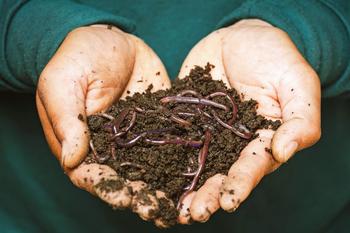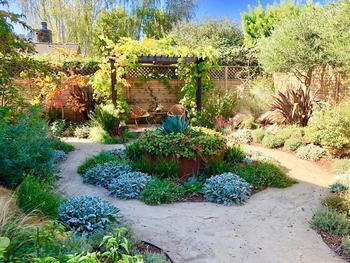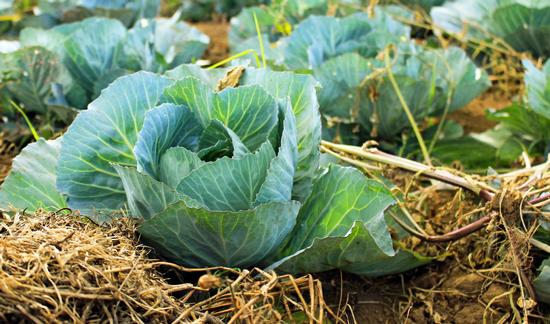Build and protect your soil
-
Nanette Londeree
-
Got dirt? Want healthy soil instead? While some may use the terms dirt and soil interchangeably, they are NOT the same thing. Simply put, dirt is dead, while soil is vibrantly alive. Dirt is a lifeless mixture of minerals, air, and water. In addition to these basic components, soil includes animals and other living things, along with their waste or decaying bodies. Whether you grow tomatoes or cabbage, strawberries or peaches, roses or houseplants, your soil is a main ingredient for healthy, productive plants. The good news is that with knowledge, a little effort, and some good organic materials, you can transform dirt into healthy soil!
Perfect soil smells sweet, is loose, friable, and well-drained. It has plenty of nutrients and a pH between 6.5 and 7.5. The crumbly, dark material supports a diverse and complex soil ecosystem, teaming with large numbers and types of organisms. And it’s the life in the soil that powers plant growth. Commonly referred to as the soil food web, the biologically active part of soil includes microscopic bacteria, algae, fungi, and protozoa; more complex life forms like nematodes and micro-arthropods, and visible creatures - earthworms, insects, and small vertebrates. One cup of soil may hold as many bacteria as there are people on Earth! Earthworms shred plant residue, mix soil, provide channels for roots and are an indicator of healthy soil. Credit: Sippakorn Yamkasikorn, Pexels
Earthworms shred plant residue, mix soil, provide channels for roots and are an indicator of healthy soil. Credit: Sippakorn Yamkasikorn, PexelsThe primary producers for the soil food web are the photosynthesizers – plants, algae and bacteria. They manufacture carbohydrates from sunlight, carbon dioxide and water while adding organic matter to the soil. Next come the decomposers, root-feeders, and parasites that break down organic matter. They hold nutrients in their body, and when they die, they become slow release fertilizer for plants. Shredders, predators, and grazers like nematodes, millipedes, and earthworms, are the next level, breaking down residue and enhancing soil structure. Higher level predators – larger arthropods, mice, voles, birds, and other above ground animals, keep lower level populations in check, and improve soil structure by burrowing and passing soil through their gut. Damage to any level of the soil food web can throw off its delicate balance and negatively impact the entire soil ecosystem.
The simplest thing you can do to build your soil structure and maintain a healthy soil food web is to add organics - compost, vermicompost, organic mulches, or composted animal manure will increase soil organic matter levels. Follow Mother Nature’s easy method - put an inch-thick top-dressing of organic material on your planting beds and don’t mix it in. Let earthworms and other creatures do the work. Plant diversity provides for a more diverse population of soil microorganisms. Credit: Jill Fugaro
Plant diversity provides for a more diverse population of soil microorganisms. Credit: Jill FugaroWith every addition of organic matter you’re building up a reservoir of slowly released nutrients that increase your garden’s productivity over time. Once you’ve got healthy soil, you can maintain it with five easy steps: disturb the soil as little as possible, grow a wide variety of plant types, keep the soil covered, continue to add organic matter, and minimize the use of synthetic chemicals. Here’s how:
Minimize disturbance: Limit tilling and turning the soil where possible; it can create a hostile environment for creatures in the soil.
Maintain plant diversity: Many of the substances soil organisms feed on are produced by plants. The greater the variety of plants, the more diverse the population of soil microorganisms will be.
Keep it covered: Use plants, their residue or mulch to cover soil to help conserve moisture, moderate temperatures, suppress weed growth, and provide habitat for soil critters that spend some of their time above ground.
 Protect soil by keeping it covered with plants and mulch. Credit: Arnaldo Aldana, Unsplash
Protect soil by keeping it covered with plants and mulch. Credit: Arnaldo Aldana, UnsplashAdd organic matter: Any plant or animal material that goes through the decomposition process provides nutrients and habitat to soil microbes, binds soil particles into aggregates and improves the water holding capacity of soil.
Kick the chemicals: Synthetic fertilizers and pesticides used to enhance plant growth may be toxic to microorganisms in the soil. Adding organic compost rather than synthetic fertilizer and utilizing an integrated pest management approach can help reduce the use of chemicals.



